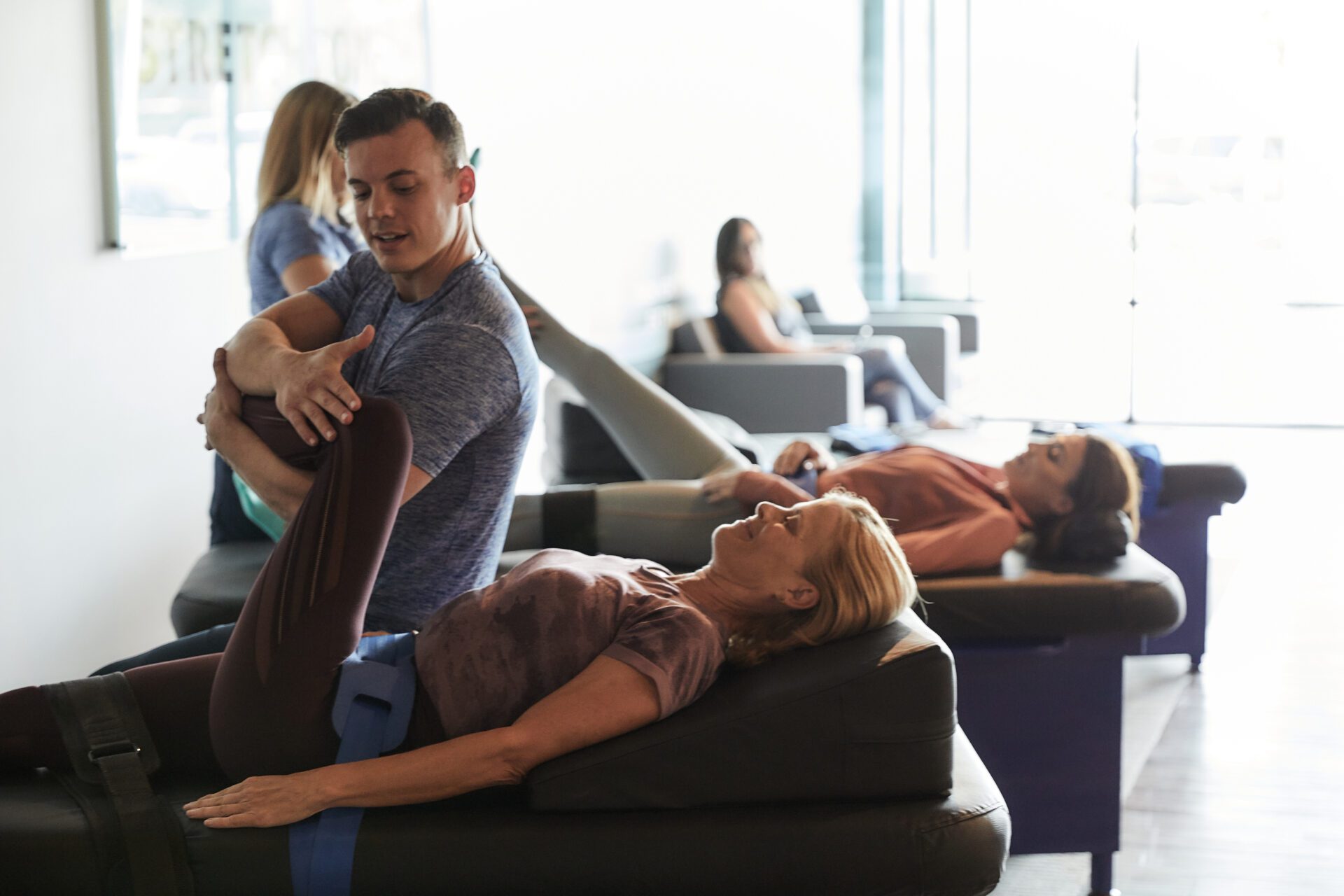
Do the Same Stretches Work for Everyone?
Practitioner-assisted stretching is beneficial for so many kinds of people. Whether you’re an athlete hoping to improve performance or you’re recovering from an injury, it’s worth looking for a place to stretch near you.
That said, you may be wondering whether you should be getting the same practitioner-assisted stretches as everyone else. This breaks down into three separate questions:
- What are the different types of stretching?
- Which type of stretching is right for me?
- Can everyone benefit from stretching?
We’ll answer all three questions in this article.
What Are the Different Types of Stretching?
There are many kinds of stretching, and different practitioners sometimes have varying forms of categorization. Some of the most common categorizations include:
- Active stretching
- Passive stretching
- Dynamic stretching
- PNF stretching
- Ballistic stretching
- Active Isolated Stretching
People have different bodies, different physical activity patterns, and thus different needs. Therefore, they’re going to need different things from their stretching regimen.
Below, we’ll explain the three most common kinds of stretching before discussing the factors you need to consider to understand which kind(s) of stretching is right for you.
Active Stretching
Active stretching is, essentially, self-stretching. While there are situations where you won’t have access to a stretch practitioner, we nonetheless want to note that self-stretching is no replacement for what a practitioner can do.
Active stretching requires you to use your own muscles to perform and maintain the stretch. This can lead to overstretching.
Passive Stretching
Passive stretching is the preferred method for increasing your range of motion because it doesn’t rely on the strength of your muscles to perform the stretch.
Instead, it relies on an external force – this can include a practitioner’s muscles or any equipment that they own, like a table – to help you achieve and maintain the stretch.
PNF Stretching
PNF stands for Proprioceptive Neuromuscular Facilitation.
Proprioceptive indicates that this form of stretching involves your body’s sense of movement; neuromuscular indicates that it has to do with your voluntary muscles, as well as your sensory nerves; and facilitation indicates that someone is assisting the stretch.
While it was originally designed for treatment of stroke victims, it spread to other forms of rehabilitation and eventually came to be used by the general population.
This is typically a passive stretch performed with the help of a practitioner. It’s broken into three different kinds of stretches:
- Hold-relax
- Contract-relax
- Hold-relax with agonist contraction
All three of these stretch types involve stretching and contracting the muscle. The variations are largely a matter of whether or not you’re pushing into certain stretches, as well as whether you move certain muscles during the stretch.
Because a practitioner is helping you perform and maintain the stretch, this is useful for increasing both your Passive Range of Motion (PROM) and your Active Range of Motion (AROM)
Questions to Ask Yourself When Putting Together a Stretching Plan
The right stretching regimen needs to take your body and current physical activity into account. Below, you’ll find some of the questions you can ask yourself when putting together a personalized stretching plan.
What Sports Are You Playing?
The sport that you’re playing can have a significant impact on which stretching regimen is going to be most beneficial. Specifically, we want to understand how many stretch-shortening cycles (SSCs) the sport requires you to engage in.
This kind of physical activity typically occurs in sports that have a lot of bouncing and jumping (e.g., basketball). In sports like these, the leg muscles getting stretched need to receive special attention during your stretching regimen.
This helps reduce injury by making the muscles more flexible and thus less likely to be injured during SSCs.
When Are You Stretching?
When you choose to stretch can have a significant impact on the kind of stretching that’s right for you. While time of day does not have a major impact, what you’ve done before or after the stretch does.
If you choose to stretch after a workout, for instance, your muscles will be warmer than if you’d stretched before the workout.
As well, it can be useful to stretch after you’ve been asleep for a while. Bodies can get stiff if they’ve been lying in the same position for hours. The fact that blood flow decreases when you’re asleep means that stretching is great for getting the blood moving again.
Are Any of Your Muscles Sore or Aching?
It’s normal to feel a bit of soreness after a workout. In fact, this can be a good thing, indicating that your muscles are gaining strength. Stretching sore muscles can help release some of that tightness, though you’ll want to understand where the soreness is coming from.
For instance, stretches are extremely important for soothing fascia pain, since they help improve your range of motion. On the other hand, you’ll want to be careful if you think you may have suffered from overstretching by yourself.
Have You Experienced Any Injuries?
If you’ve experienced an injury, it’s important to stretch carefully. First, you’re going to want to let any injured or strained muscles rest.
Once your body has begun to heal and your inflammation is subsiding, it’s beneficial to start stretching again. This can help slowly improve your range of motion.
When determining a stretching regimen, you’ll want to figure out the best way to slowly push yourself, improving the range of motion in the injured area while avoiding overstretching.
Can a Professional Put Together My Stretching Plan?
Having a professional devise your stretching plan can be advantageous. First, they have a well of experience and expertise to draw on, which can help them ask questions and come up with stretches you may not even have thought of by yourself.
Furthermore, they can also adjust the plan to your experiences. Instead of looking up a plan online, they’ll be able to gain a deeper understanding of exactly what you need from your stretching regimen.
Should I Stretch by Myself?
There are situations when it may make sense to stretch by yourself, but this is no replacement for practitioner-assisted stretching.
A professional stretch practitioner won’t just help you create a stretching plan ideal for your physiology. They’ll also enable you to enjoy the benefits of passive stretching.
Unfortunately, it’s all too easy to cause an injury when self-stretching. Instead, it’s best to work with a practitioner, who will be able to use external forces to position and maintain your stretch.
The practitioner can use their own muscles or equipment, but either way, the external force will enable you to push yourself more while feeling less discomfort.
By pushing yourself, you’re able to increase your range of motion. Essentially, you get to combine less discomfort with more progress.
A practitioner will also be able to monitor your stretch, making sure that it is safe. At Stretch Zone we have a numbered system that our clients use. This helps the practitioner understand when the stretch is felt, as well as when the client feels that they’ve stretched as far as they can go.
Is It Okay to Do the Same Stretch Every Day?
If different people need different kinds of stretches, you may be wondering: once you’ve found the best stretches for you, can you just do the same ones every day?
Ultimately, this is not good for your body. When you do the same stretches every day, you’re likely to overstretch. Instead of having to take some days off stretching entirely, though, it can be beneficial to stretch different muscles on different days.
As well as avoiding overstretching, this also allows you to make sure you’re working all of the muscles that need to remain flexible. This ultimately improves your range of motion, leading to a happier, more limber you.
Why Do Some People Need to Stretch More Than Others?
While everyone can benefit from stretching, some people are naturally more limber than others. There are various factors that contribute to someone’s flexibility, regardless of their stretching regimen.
These factors include:
- Age
- Sex
- Genetics
Age
As we age, our muscles tend to become less flexible over time. One of the best ways to combat this is with stretch therapy.
Sex
The sex you are born as also has an impact on how flexible you are, with women tending to be more flexible than men. This can be explained partially by hormonal differences.
Testosterone increases muscle mass, and these muscles are likely to be shorter, which means they’ll be less pliable. Women, on the other hand, tend to have longer muscles.
Genetics
Alongside age and sex, genetics also has a major impact. Seven genetic markers have currently been linked to flexibility. These can affect things like your joint surfaces, muscle length, muscle compliant, ligament pliability, and more. Some people are born stiffer due to these variables.
On the other end of the spectrum, genetics causes some people to have joint hypermobility syndrome, which means that their joints are overly flexible.
Despite these factors, the stretching and exercise habits people form in their daily lives typically have a much larger impact on your flexibility than your age, gender, or genetics.
Should I Stretch If I Have Joint Hypermobility Syndrome?
If you have joint hypermobility syndrome, you may be wondering if you shouldn’t stretch. After all, stretching is designed to help increase flexibility, which you already have too much of.
You might be surprised to learn that stretching is useful for reducing inflammation in those hyperflexible joints. When stretching in this scenario, you’re not looking to increase your range of motion. Instead, you’re looking to increase your vagal tone.
Stretching also increases blood flow and endorphin levels in the area of the stretch. This helps reduce discomfort that might be caused by their hypermobility.
Should I Stretch If I Have Heart Problems?
Stretching is important for improving heart health, in no small part because of the way it improves blood flow. You’ll want to speak with a doctor if you’ve had a heart attack and are concerned but stretching is one of many tools you can use for trying to improve heart health.
Should I Stretch If I Have Diabetes?
Yes, stretching is excellent for people who have diabetes. This is because it has been shown to be beneficial for your blood sugar levels.
What If I’m Consistently Overstretching?
If you find yourself putting too much strain on your muscles because you’re consistently overstretching, that’s a good sign that you should instead engage in practitioner-assisted stretching.
Unfortunately, it’s all too easy to overextend yourself during active stretching. A practitioner has the expertise necessary to understand exactly how far your body can go.
Where Should I Stretch?
Generally speaking, the location where you choose to stretch doesn’t have a major impact on its efficacy. One of the biggest things you’re looking for is convenience. It’s a good idea to find a stretch studio near you, since this makes you more likely to visit regularly.
Other than that, you’ll simply want to find a location that you’re comfortable with, a location that has stretch practitioners who are well-trained and thus able to provide you with a healthy stretch.
Looking for Practitioner-Assisted Stretching Near You?
Stretch Zone has you covered. For years, we’ve been helping people understand the benefits that practitioner-assisted stretching can bring to their lives.
We have locations throughout the country, which means you can rest easy knowing that there’s probably a Stretch Zone studio near you. Don’t hesitate to reach out for a free 30-minute stretch session.


